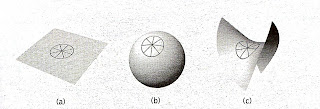What is there in Strings Theory? What are hyper-dimensions? How does the area of a given geometry change when the shapes change? I have always wanted to know these. Though we have several books on relativity and quantum mechanics no book covers the hot-topic as this book has covered. For the first time I got to know calabi Yau.
Greene touches topics on his own contributions to super-string theory, as he is well-qualified to cover this aspect. Thankfully, he is also a clear and engaging writer, and this is one of the most readable science books I've read while still being assured that it would be accurate.
He presents conclusion and then the proof!, which may take out interest at times but towards the end of the book I think the difficulty of the material begins to overwhelm his ability to explain it clearly to the layman without mathematics. Each chapter, I felt, would not be complete until the next one was touched. The continuity is felt throughout, but at times you would need a break either to digest what he has said or to bring back concentration, particularly on string theory.
The first few chapters are a brief but comprehensive introduction to the basics of special relativity, general relativity, quantum mechanics, and their conflict, and are worth the price of the book by themselves. I've read innumerable explanations of relativity before, from physics textbooks to posts on the net, and this book's introduction still clarified for me things that I'd not really understood.
It may even help with the details of what goes with general relativity and what goes with special relativity. The quantum mechanics is not quite as good, but then quantum mechanics is harder to explain, and Greene does a competent job at introducing the important bits that will matter for the story of super-string theory (Like Perturbation Theory and Approximation methods).
The heart of this book, of course, is the explanation of just what superstring theory is, why people care about it, and what it's status is at the time of the writing of the book. With this, I was quite satisfied. Superstring theory is a hard topic to explain, given the esoteric circumstances under which it diverges from established theories, its use of ten- and eleven-dimensional space with folded dimensions, and its close association with topology theory .
The importance of unification of quantum mechanics with general relativity makes sense, but I didn't understand how he could express dissatisfaction with quantum mechanics for requiring that the weights of fundamental particles be experimentally determined rather than predicted.
But the most significant thing I found in this book was how multi-dimensions can be unfolded and how large distances can be traveled without travelling at the speed of light using Worm-holes. Quite good reasons he has to show this is possible. The text is quite readable without the end notes, and a non-scientific reader likely is better off skipping them.
The end of the book has a very interesting summary of each chapter. A must read for every 'reader'.
Greene touches topics on his own contributions to super-string theory, as he is well-qualified to cover this aspect. Thankfully, he is also a clear and engaging writer, and this is one of the most readable science books I've read while still being assured that it would be accurate.
He presents conclusion and then the proof!, which may take out interest at times but towards the end of the book I think the difficulty of the material begins to overwhelm his ability to explain it clearly to the layman without mathematics. Each chapter, I felt, would not be complete until the next one was touched. The continuity is felt throughout, but at times you would need a break either to digest what he has said or to bring back concentration, particularly on string theory.
The first few chapters are a brief but comprehensive introduction to the basics of special relativity, general relativity, quantum mechanics, and their conflict, and are worth the price of the book by themselves. I've read innumerable explanations of relativity before, from physics textbooks to posts on the net, and this book's introduction still clarified for me things that I'd not really understood.
It may even help with the details of what goes with general relativity and what goes with special relativity. The quantum mechanics is not quite as good, but then quantum mechanics is harder to explain, and Greene does a competent job at introducing the important bits that will matter for the story of super-string theory (Like Perturbation Theory and Approximation methods).
The heart of this book, of course, is the explanation of just what superstring theory is, why people care about it, and what it's status is at the time of the writing of the book. With this, I was quite satisfied. Superstring theory is a hard topic to explain, given the esoteric circumstances under which it diverges from established theories, its use of ten- and eleven-dimensional space with folded dimensions, and its close association with topology theory .
The importance of unification of quantum mechanics with general relativity makes sense, but I didn't understand how he could express dissatisfaction with quantum mechanics for requiring that the weights of fundamental particles be experimentally determined rather than predicted.
But the most significant thing I found in this book was how multi-dimensions can be unfolded and how large distances can be traveled without travelling at the speed of light using Worm-holes. Quite good reasons he has to show this is possible. The text is quite readable without the end notes, and a non-scientific reader likely is better off skipping them.
The end of the book has a very interesting summary of each chapter. A must read for every 'reader'.













